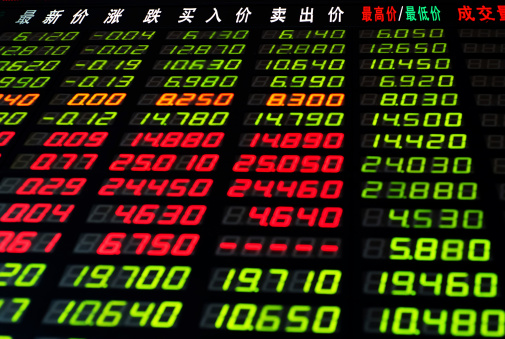
Cross-border trading between Shanghai and Hong Kong promises economic opportunity and regulatory challenges.
Stock market trading may be about to change dramatically in the Asian markets.
The China Securities Regulatory Commission (CSRC) and Hong Kong’s Securities and Futures Commission (SFC) recently approved a pilot program that will link the Shanghai and Hong Kong stock exchanges. The two stock markets function in separate legal jurisdictions under vastly different regulatory regimes and often use different currencies and languages. If launched, the project promises to open Chinese capital markets to international investors; however, it is also likely to introduce a slew of hurdles for both domestic and foreign regulators.
The Shanghai-Hong Kong Stock Connect—or SHS Connect—project is scheduled to launch in October. It will allow traders in Hong Kong to buy stocks listed on the Shanghai Exchange, and vice versa. Trading will be constrained initially, with caps on cash flow and limits on eligible stocks. These trading limits are provisionary and may be altered as the program develops. Indeed, commentators expect that, once established, the corridor will inevitably be expanded to cover other asset classes, like bonds or commodities.
In a joint press release announcing the pilot program, the CSRC and SFC emphasized the need to forge a new regulatory environment to address the unique issues that will undoubtedly arise from cross-border trading. Once the SHS Connect is running, trades through this corridor will be subject to regulations in both Shanghai and Hong Kong. The Shanghai Stock Exchange is reportedly already developing unique rules to further address connected trades.
Additional regulatory guides will be created to structure investigative cooperation and enforcement between the two jurisdictions. A new “liaison mechanism” will also be launched to address any issues that require a joint resolution by Shanghai and Hong Kong.
Multinational financial institutions are closely watching the SHS Connect since it may herald a significant change to participating markets. The project is expected to increase regional trade and ultimately bring the Hong Kong and Shanghai markets closer together by reducing the need for dually-listed stocks. The SHS Connect is also expected to open Shanghai to international markets, in part by eroding Chinese capital controls aimed at foreign investors. Currently, both Shanghai and Hong Kong are competing against each other, as well as stronger Asian markets like Singapore and Tokyo.
Conceptually, the SHS Connect is a part of a broader Chinese economic experiment, known as the “Shanghai Free Trade Zone” (FTZ), which promises to spur domestic economic growth by easing restrictions on foreign investments. On their part, Hong Kong authorities have enthusiastically expressed approval of the FTZ, trumpeting the project’s contribution to “[China’s] reform and opening up.”
Despite official enthusiasm about possible economic growth opportunities, commentators emphasize that no explicit details have emerged yet on regulatory oversight and enforcement plans. For example, national securities regulators, like the Federal Trade Commission (FTC) and CSRC, may face legal difficulties collecting evidence or performing investigations in a foreign jurisdiction, regardless of cooperation agreements. This will affect their ability to prosecute any market manipulation, money laundering, and insider trading that takes place through the SHS Connect.
The SHS Connect may also exacerbate old concerns. Hong Kong and China have significantly different regulatory regimes, with Hong Kong being friendlier to shareholder lawsuits and consumer complaints. As shareholders increasingly cross these jurisdictional boundaries, some fear that shareholder protections in Hong Kong may be eroded.
On an international regulatory scale, it is possible these hurdles will complicate cooperation between Hong Kong, Shanghai, and foreign regulators. Overseas regulators, like the U.S. Securities and Exchange Commission, sometimes request aid and cooperation from the FTC and CSRC in their own investigations into trades within those jurisdictions. It is not clear how foreign regulators will engage each relevant agency when investigating trades facilitated by the SHS Connect.
Finally, there are basic operational hurdles: the vastly different rules governing the Shanghai and Hong Kong exchanges will need to be reconciled or addressed as conflicts arise during regular trading. Ultimately, it is not clear yet how much oversight and control regulatory agencies will exercise.
How the SHS Connect eventually attempts to overcome these regulatory challenges will probably affect the success of this cross-border initiative.



